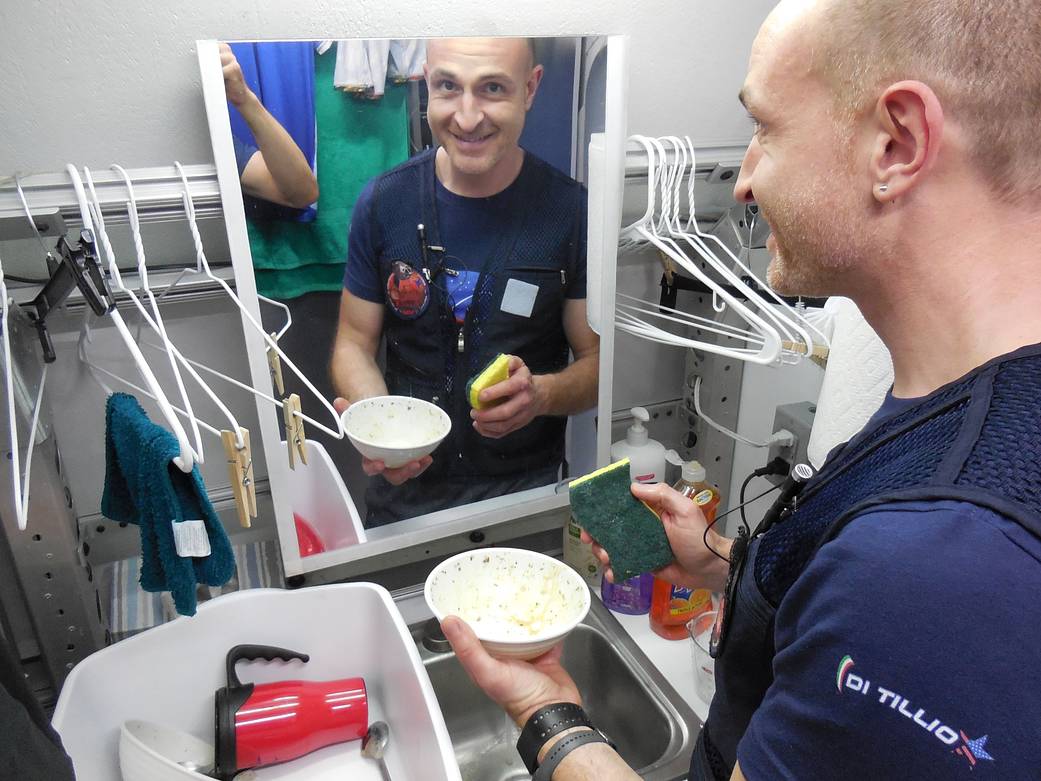At the sink inside NASA’s Human Exploration Research Analog, or HERA, crew member Pietro Di Tillio scrubs a bowl with a sponge after his meal. Even though Di Tillio is on Earth, he’s simulating what life would be like on a deep space mission, including the daily, repetitive tasks to keep quarters clean and orderly.
For sanitation reasons, HERA missions are equipped with running water. But the tiny habitat has no room for a dishwasher, so crew members must hand wash their dishes. The habitat gives researchers planning future exploration missions an opportunity to study how performing mundane tasks in tight quarters over long stretches of time affects crew performance and behavior.
Credit: NASA
____
NASA’s Human Research Program, or HRP, pursues the best methods and technologies to support safe, productive human space travel. Through science conducted in laboratories, ground-based analogs, and the International Space Station, HRP scrutinizes how spaceflight affects human bodies and behaviors. Such research drives HRP’s quest to innovate ways that keep astronauts healthy and mission-ready as space travel expands to the Moon, Mars, and beyond.
Nathan Cranford
Jennifer TurnerNASA Human Research Program Strategic Communications


























